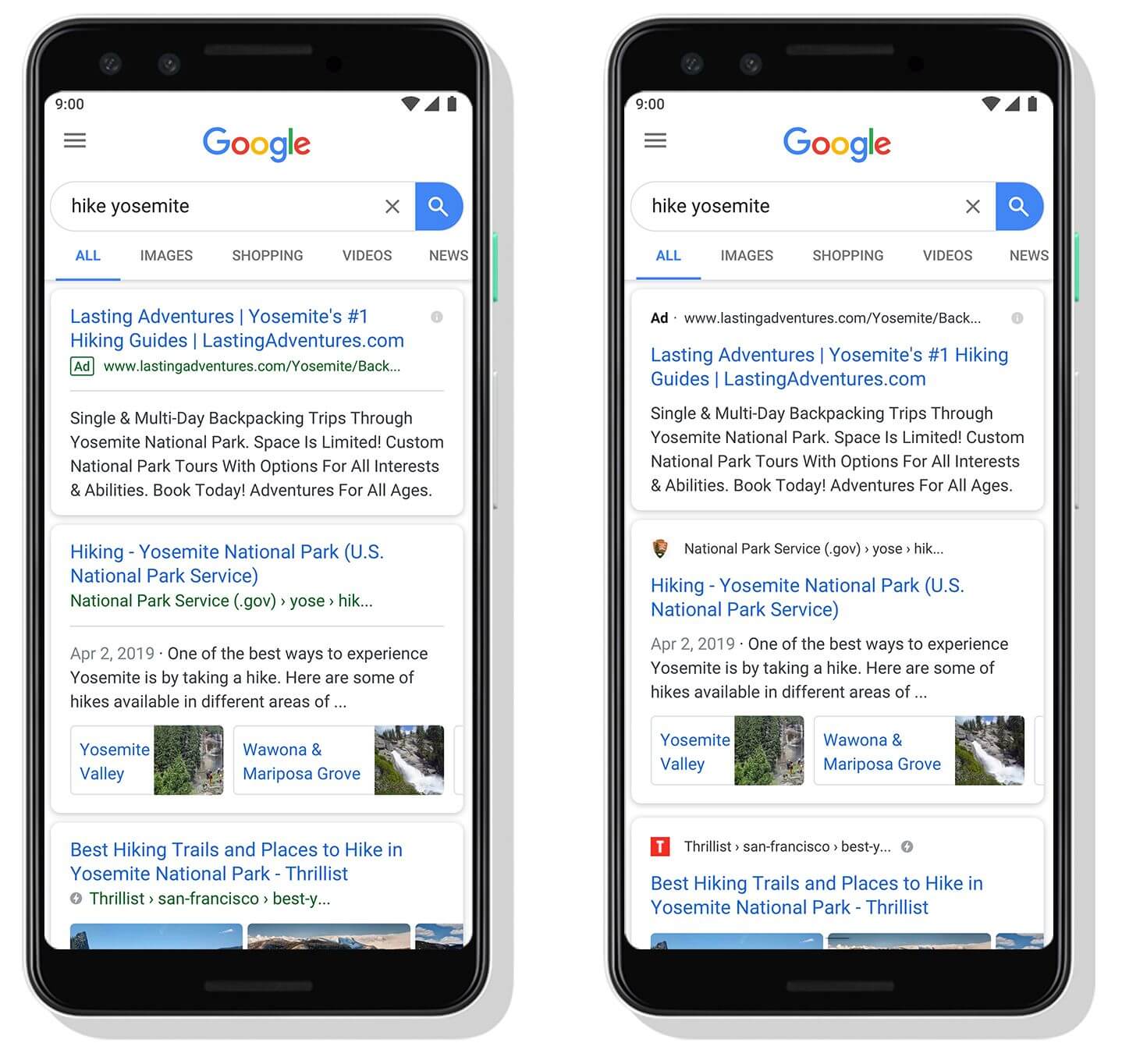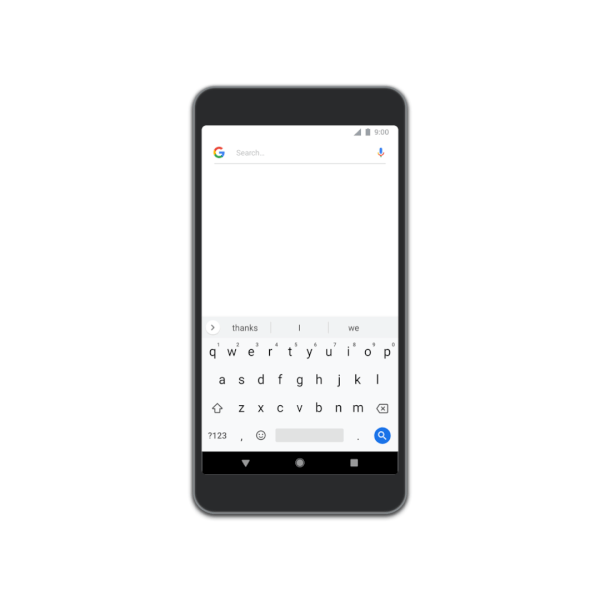SEO year in review 2019: Zero-click searches, BERT, local spam and more
What’s past is prologue. Here’s our recap of the stories that will shape search for years to come
From algorithm updates to emerging trends, here we look back at the big SEO stories of 2019 that will shape search for years to come.
Search updates
Google Search algorithm updates. In 2019, Google became a bit more forthcoming about big core updates. On top of confirming the March core update, the company introduced a naming convention (sure, they’re not as fun as the names SEOs came up with, but at least we all have a common language around them now). And, at long last, starting with June, Google began giving SEOs and site owners a heads-up before rolling out core updates. It did the same with September’s core update.
The company also made other, more specific updates, including one to givemore weight to signals that indicate expertise, authority and trustworthiness (E-A-T) for Your Money or Your Life (YMYL) queries. A diversity update aimed to limit listings from a single domain to two results for a given query. In August, a recency update emphasized more timely featured snippets and another, introduced in September, was designed to give more preference to original reporting. Most significantly, Microsoft and Google both introduced improved natural language understanding via BERT.
For a deeper dive, see our roundup of the big 2019 Google search algorithm updates.
The search results. Searches ending without a click to website content hit an all-time high this year, now constituting more than 50% of Google searches, according to Jumpshot data.
The decline of organic clicks has been brought on by UI changes on the search results page. For example, rich answers, which often eliminate the need for users to click through on a result, have more than doubled in mobile search results since 2018, a Perficient Digital study found. The introduction of support for FAQ and how-to structured data drew mixed reactions from marketers for its potential to increase their visibility on the search results but at the cost of possibly disincentivizing the click.
The prevalence of rich results has affected the way people navigate search features, giving rise to what the Nielsen Norman Group refers to as the “pinball pattern,” in which users bounce their attention between elements in a nonlinear fashion. If their study is representative of the way users interact with the search results page, there is a clear incentive for brands to optimize for Google’s ever-growing number of search features.

Google rolled out a mobile search result redesign with black “Ad” labels for paid listings and favicons for organic results. Some members of the SEO community pointed out that the redesign was likely to lead users to further mistake ads for organic results.
Search Quality Evaluator Guidelines. Google employs human contractors to evaluate its search results and, although they do not directly influence rankings, those evaluators provide feedback that helps Google improve its algorithms. In 2019, the guidelines that those evaluators are instructed to follow were updated three times.
In May, the guidelines were refreshed with more explicit references to E-A-T and provided directions on evaluating interstitial pages and content creator expertise.
The September guideline revisions added more emphasis on vetting sources, particularly for news and Your Money or Your Life (YMYL) content. It also added the potential to spread hate as one of the grounds for which a rater might apply the lowest content rating.
Google attempted to encourage impartiality with its December update to the guidelines, in which it reminded evaluators that users come from diverse backgrounds and that ratings should not be based on “personal opinions, preferences, religious beliefs, or political views.”
Crawling, indexing and ranking
Mobile-first from now on. All sites previously unknown to Google prior to July 1 are now indexed using mobile-first indexing. However, older sites are still being moved over to mobile-first indexing when Google deems them ready.
The bots go evergreen. In May, Google launched the evergreen version of its web crawler, Googlebot, meaning that the crawler will stay up-to-date with the latest version of Chromium. Bingbot also went evergreen as Bing adopted the Chromium-based Edge browser to render pages and run JavaScript.
Although some limitations still exist, evergreen web crawlers based on the same Chromium platform mean more of our content can be seen by Bing and Google, and fewer instances of troubleshooting for a particular crawler.
No longer directives. As of September 1, Google withdrew support for unpublished rules within the Robots Exclusion Protocol, putting an end to noindex as a directive within the robots.txt file.
New link attributes. Google introduced rel=”sponsored” and rel=”ugc” to indicate paid and user-generated content, respectively. On the heels of that announcement, it also said that it would be treating all link attributes, including rel=”nofollow,” as a hint for ranking purposes rather than a directive. The “hint” treatment and the optional nature of the new attributes had many SEOs contemplating who was likely to gain from their adoption and the value in implementing them at all.
Farewell, rel=prev/next. In March, we received a belated confirmation from Google’s John Mueller that it had stopped supporting rel=prev/next, a pagination markup that the company itself launched in 2011.
Inferred headings. In October, Google revealed that multiple H1 tags on a page, or even the lack thereof, would not trip up Google’s systems.
Similar to the reaction to the rel=prev/next announcement, many in the SEO community pointed out that the tag’s application is broader than SEO and that employing proper headings provides a better user experience, regardless of how Google treats it.
The Google Assistant
This year, the Assistant’s growing capabilities were bolstered by moving speech processing from the cloud directly to the device, which delivers answers up to 10 times faster, Google said. In July, another important transition occurred when Google swapped out voice search in favor of the Assistant on Android devices.

Google’s AI-powered appointment booking system, Duplex (first demoed in 2018), brought automated restaurant reservations and movie ticket purchases to the Assistant this year. It also rolled out more widely to both Android and iPhone users.
Local search
For local business owners. Google My Business added more tools for business owners, namely bulk review management, a new screening program called Google Screened and searchable shortnames.
Yelp launched paid profile upgrades, including verified licenses for local providers, business highlights and a portfolio section.
Local rankings. Members of the SEO community witnessed local rankings volatility in early November.
Joy Hawkins, owner of Sterling Sky Inc. and the Local Search Forum, suggested that the changes were mainly related to relevance and that Google seemed to be doing a better job of understanding a broader set of search terms as they might be applied to a single business. Contributor Craig Mount, founder of Classy Brain, said that the update doubled-down on proximity signals.
Google confirmed the update in early December, referring to it as the “Nov. 2019 Local Search Update,” following the naming convention it uses for core search updates. In its announcement, the company stated that update was related to neural matching, which would help it understand when a query contains local search intent. This update has rolled out to all countries and languages worldwide.
The bane and lifeblood of local businesses. Local listings are a valuable channel for many businesses, but the system is far from perfect and many are concerned by the direction that Google seems to be headed.
In April, the company sent out a survey to local businesses asking how much they’d be willing to pay for some of the features they were already receiving for free. Local SEO practitioners’ responses ranged from excitement at the prospect of better customer support to criticism for abusing its position in the search market.
Competitor ads began appearing on local profiles in August, reminding businesses that Google is the true owner of their My Business listings. The option to remove these ads has not been made available.
Businesses in need of immediate help with their Google My Business listings found themselves with one less resource when the company shut down its toll-free customer support line in November. Anyone wishing to speak directly to a support specialist must now fill out a form to request a call back.
In addition to the changes in Google’s local service offerings, spam listings have plagued local results. Local SEOs have been keen to point out that Google stands to gain even with the spam problem, as legitimate businesses may be driven towards paid ads to regain visibility. Google has highlighted its spam-fighting efforts, but they have done little to alleviate concerns from the SEO community and business owners.
Travel vertical
Google became an even larger force in the travel sector by launching hotel search in March and adding vacation rentals to it shortly after. Google Hotels features much of the same functionality and tools as other booking sites like Expedia or Kayak; however, one of its biggest advantages is Maps and Search integration.

Maps and Google’s other travel offerings became even more tightly integrated when the company launched Trips in May, combining flight and hotel search, destination research and a timeline of reservations into a single web interface.
Bing also made more inroads into the travel vertical by adding real-time data and direct integrations with airlines to strengthen its flight search capabilities. These moves by Google and Bing may hurt traffic to online travel agencies as users get used to planning their trips from the search results page.
The rise of visual search
Google Lens received a wide array of feature additions this year, including live translations, the ability to scan and research menu items and “style ideas” that leverage its image recognition capabilities for e-commerce.
Pinterest has made headway with visual search by enabling users to isolate items in pins to search for similar objects. In September, the company strengthened its e-commerce offerings by bringing shoppable pins to visual search for home and fashion products.
Microsoft also brought Bing Visual Search to the Windows search bar, enabling users to take a full or partial screenshot to search right from their desktops.
Antitrust and privacy at home and abroad
State attorneys generals from across the U.S. announced investigations into Google (and Facebook) in September over alleged anti-competitive behavior. The multistate investigation will be conducted with the cooperation of federal authorities and focus on the degree of control Google exercises over the digital advertising sector and whether it acquired companies to stifle competition.
Google continues to face regulatory scrutiny in Europe. In March, the company was fined $1.7 billion over “abusive” AdSense publisher contracts, pushing the total fines from three antitrust complaints spanning 2017–2019 to $9.3 billion.
In November, EU antitrust regulators announced that they were investigating Google’s collection and use of data, with a focus on “data related to local search services, online advertising, online ad targeting services, login services, web browsers and others.” Around the same time, complaints against Google from rival shopping comparison engines also caught the attention of the European Commission.
As part of one of its earlier settlements with the European Commission, Google will be prompting Android users in the EU to select a default search provider beginning in 2020. The bidding process it’s using to select which competitors will appear on the search engine choice screen has drawn complaints from critics.
